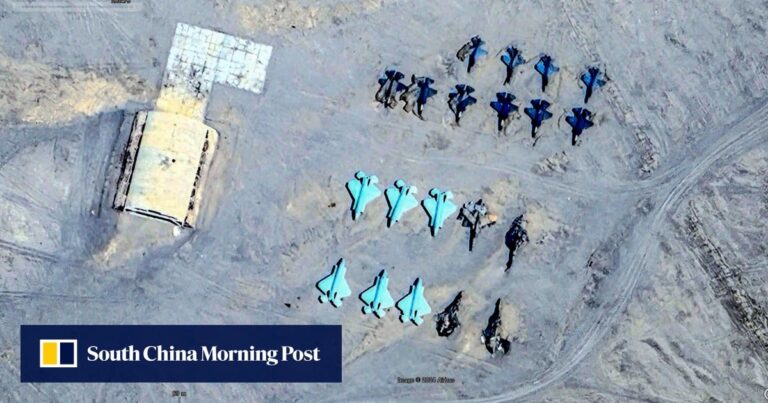A military blog account identified the location as Kakilik in the Taklamakan Desert. The Washington Post was unable to verify the image, and there was no official confirmation from China.
Some of these replicas appeared to be badly damaged.
The exercise reflects the People’s Liberation Army’s efforts to bolster its long-range ballistic and cruise missile systems to neutralize threats from the U.S. navy, said Collin Koh, a research fellow at Singapore’s S. Rajaratnam School of International Studies.
“The navies of the United States and its allies would generally be natural targets because their power projection capabilities are perceived as a threat by Beijing,” he said.
He added that if the exercise had involved the PLA’s intercontinental-range missile systems, they could have been training for attacks on targets such as Guam, Alaska or Hawaii.
China’s People’s Liberation Army has long insisted that its drills are not aimed at any particular party, but mock targets can sometimes reveal the PLA’s thinking, whether by accident or design.
Malcolm Davis, a senior analyst at the Australian Strategic Policy Institute, said the exercises appeared to fit into the People’s Liberation Army’s counter-intervention strategy aimed at denying U.S. and allied naval forces in the western Pacific access to potential war zones in the east.
“This means the PLA’s strike capabilities are likely equipped with either electro-optical or synthetic aperture radar terminal guidance systems to image targets and guide warheads before precisely striking specific locations on military bases,” he said.
The exercise will enable the PLA to improve its accuracy in scenarios such as ballistic missiles “attempting to attack moving targets at sea, such as aircraft carriers.”
He also said the desert training would help the PLA improve its ability to launch precision strikes with long-range conventional weapons against land targets such as airfields.

Hong Kong-based military commentator Leung Kuo-liang said the satellite images suggested a mock attack on Alaska, where most of China’s F-22 fighter jets are based.
“Alaska is also the base of the United States’ most important national missile defense system. Last year, an F-22 was used to shoot down China’s so-called reconnaissance balloon, indicating that the F-22 is also tasked with missile defense system duties,” Liang said.
Timothy Heath, a senior international defense fellow at the RAND Corporation, added: “China isn’t hiding the model, so it may not bother Western countries seeing it.”
“China may want the U.S. military to see this as a reminder that China is serious about its military training and preparations, and as a warning to the United States,” Heath said.


.jpg?itok=HN_FTHj9)